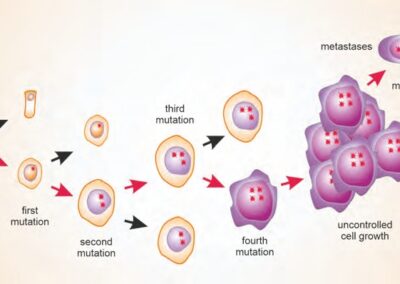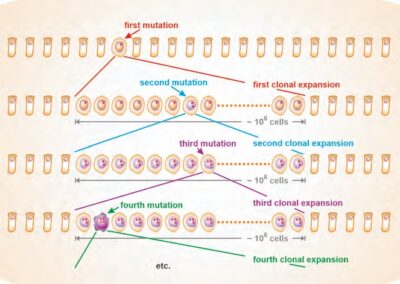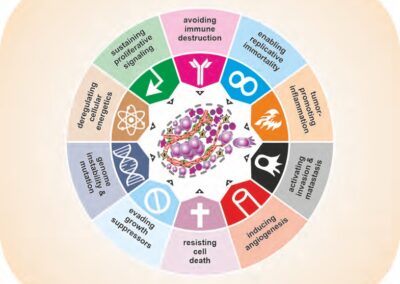In Chapter 2 you will learn, among other things, what cancer is, how this disease is defined and which features distinguish tumor cells from healthy cells. You will also learn that cancer is a disease that only affects multicellular organisms. The risk of its occurrence is a kind of „tax“ on the way the body is organized. In the absence of an authoritative central control that would determine the location, shape, function and other parameters of the body’s cells, the cells themselves, their mutual interaction and communication are the decisive factors. This gives the cells a high degree of autonomy and at the same time responsibility towards the whole – i.e. the multicellular body. And there is a certain risk that one of the many billions of cells that make up the body will change and go its own way: it does not lose its viability, but on the contrary becomes a dominant, powerful cell with a set of characteristics that allow it to thrive – to multiply rapidly, to travel through the body, to draw unlimited resources for its metabolism and to ignore signals to slow down or die. Due to genetic changes, this differentiated cell is dangerous primarily because it successfully passes on its newly acquired advantages to its daughter cells, with which it forms a tumor. At the same time, however, such cells lose an essential property – the ability to cooperate with other cells for the benefit of the whole to that they belong, i.e. the body. By ignoring the rules of social behavior and cell cooperation that apply in a healthy body and misusing the shared resources, these selfish tumor cells become such a burden on the body that they can completely „suck“ it dry“ and ultimately kill it. By destroying the body on which they parasitize, the tumor cells also condemn themselves to death.
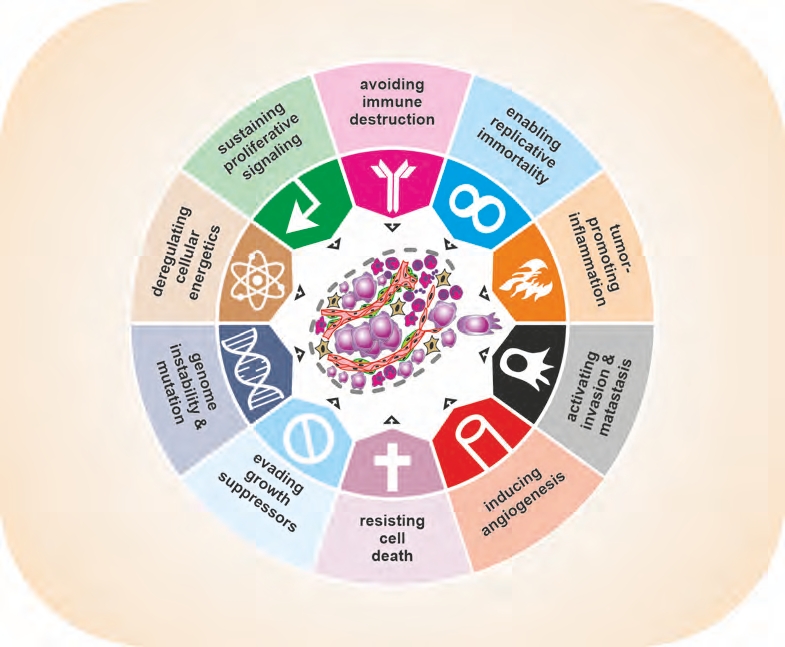
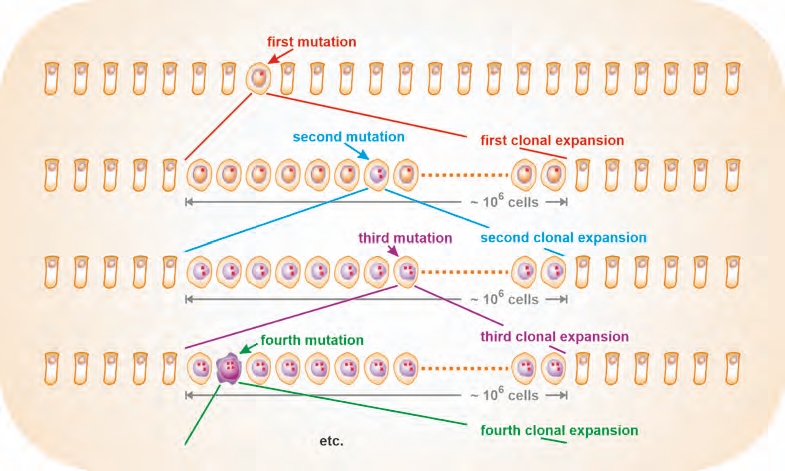
Chapter 2 contains a list of eleven main features of tumor cells, which are discussed in detail in the following chapters. None of these characteristics alone causes cancer, but their combination, their accumulation in a cell and its progeny, is dangerous. The famous Austrian ethologist and Nobel Prize winner Konrad Lorenz has described another list: a list of human „sins“ that can threaten not only our civilization, but even humans themselves. Again, it is not a single sin that is dangerous, but the combination of all our human weaknesses that encourage the following „sinful actions“. Self-destructive behaviors that endanger our civilization include, for example, the destruction of natural resources, the rapid pace of technological development that blinds us to the point of losing our sense of true values and beauty, the reluctance to overcome obstacles and the resulting loss of the experience of joy in overcoming these obstacles, the break with tradition that manifests itself in a generation gap, our indulgence in doctrines, etc.
The community of cells in the body and the community of people in society. Two different systems in which the individual contributes his small part to the benefit of a higher unity, be it an organ, a tissue, a body or a family, a community, a nation, humanity. Pathological behavior of cells or people that violates the rules of their cooperation risks the collapse of their common project. Embark on an adventure to unravel the mechanisms responsible for the malfunction of healthy cells turning into cancer cells and their counterparts in human society. The next chapters will guide you on this journey.

